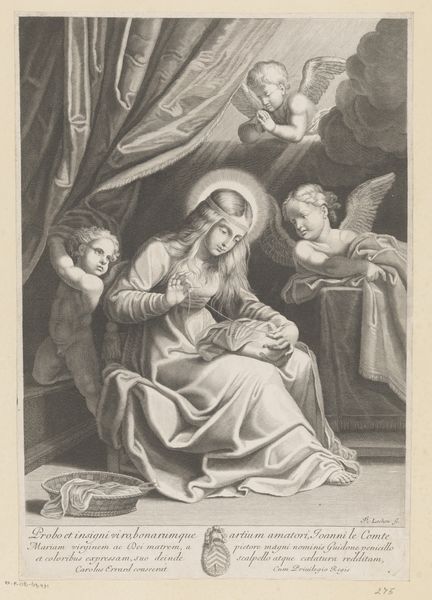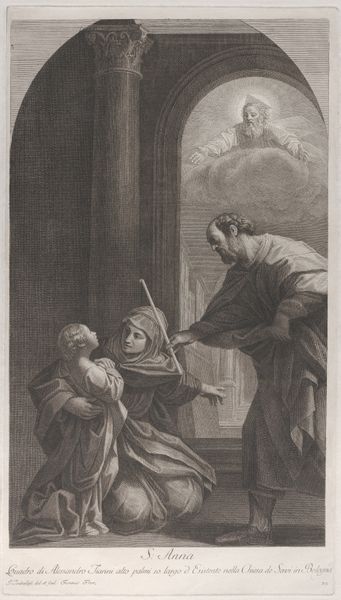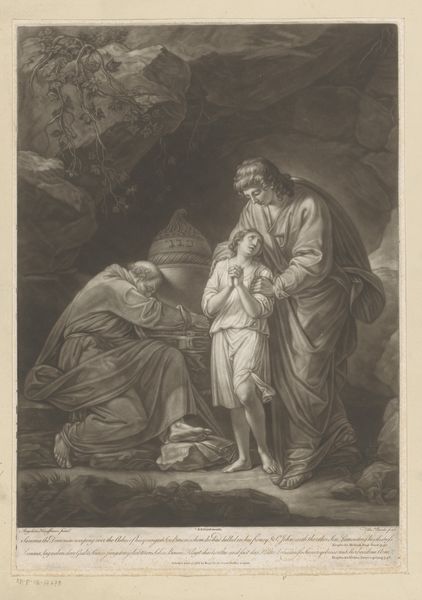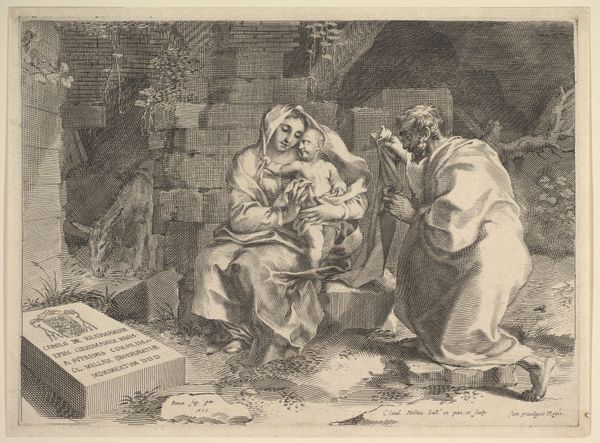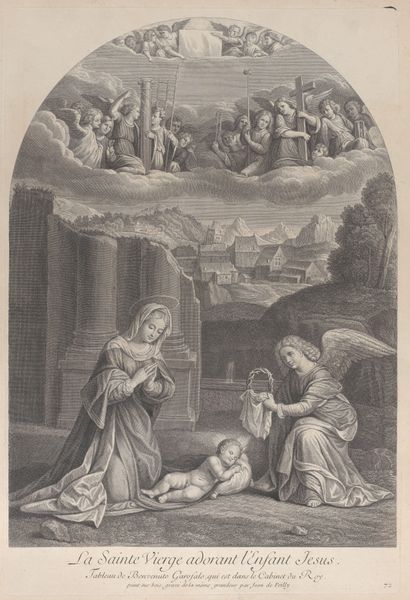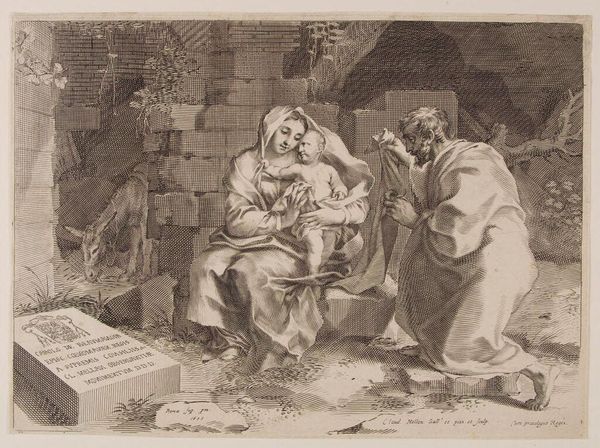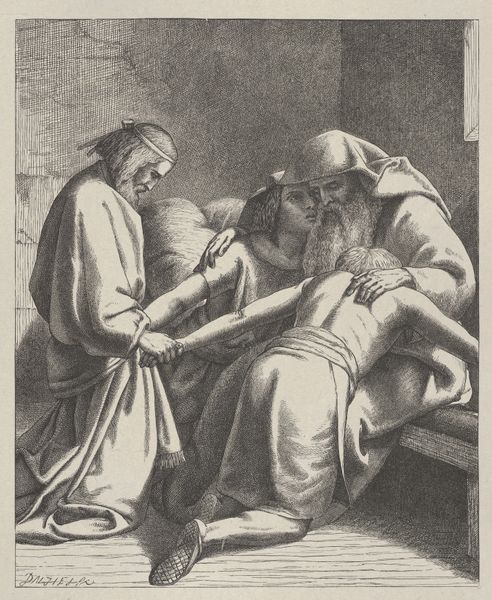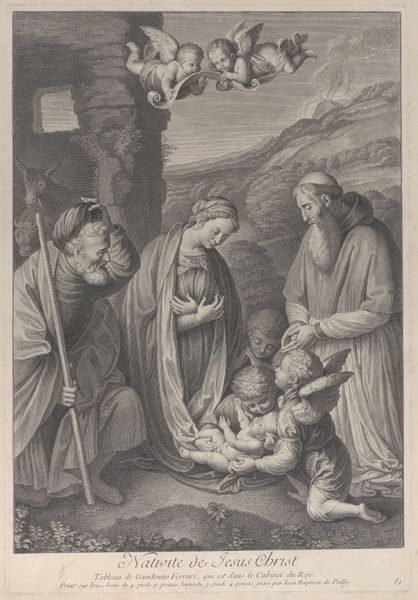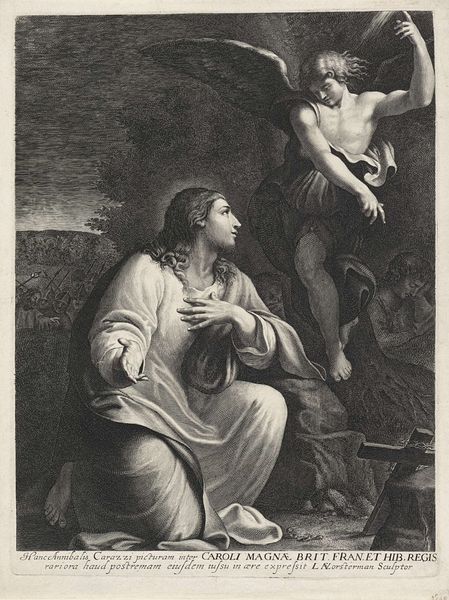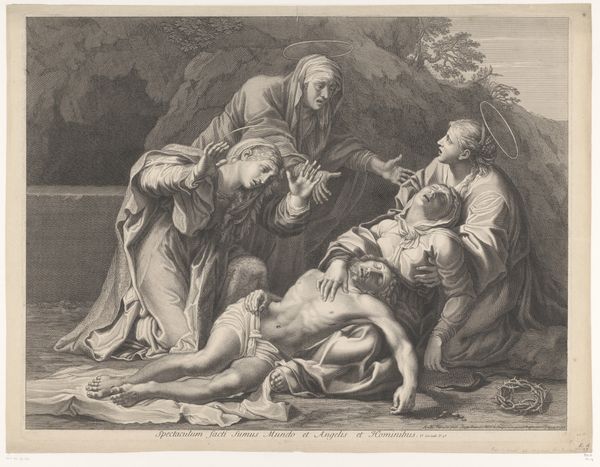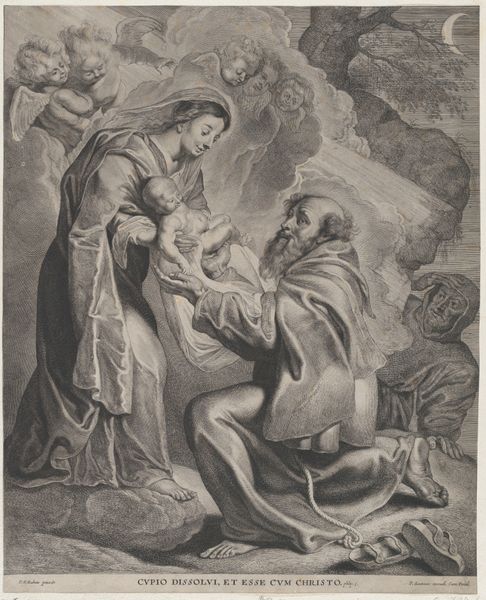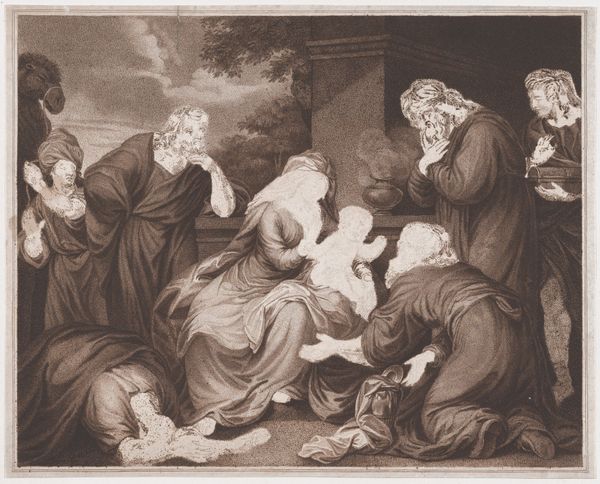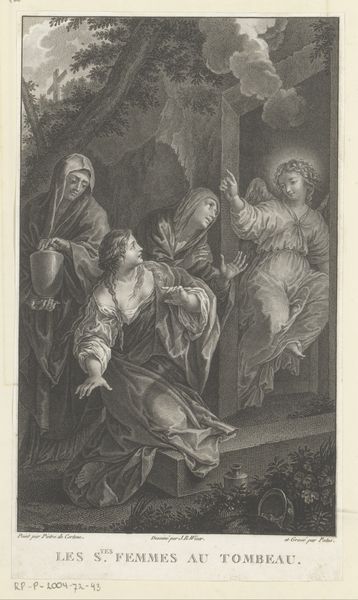
engraving
#
baroque
#
figuration
#
line
#
history-painting
#
italian-renaissance
#
engraving
Dimensions: height 406 mm, width 515 mm
Copyright: Rijks Museum: Open Domain
Curator: This engraving presents "Maria en Jozef in aanbidding voor het Christuskind" attributed to Pierre Landry. Its creation dates somewhere between 1640 and 1701. What's your initial reaction? Editor: It strikes me as deeply serene. The lines are so delicate, yet the figures are imbued with an emotional intensity – Mary's supplicating stance and Joseph’s bowed head seem very human and humble in the presence of what they consider divine. Curator: Landry's work exemplifies the Baroque period, deeply influenced by Italian Renaissance styles and characterized by a certain degree of movement and heightened emotion. Note how this adoration scene has become a staple narrative of Christian art, deployed across cultures, signaling various socio-political dynamics. Editor: Absolutely. The act of worship itself implies a power dynamic. Yet, observing this particular representation from the 17th century, I'm drawn to its commentary on family values, especially regarding the position of women. While clearly subordinate in religious doctrine, the figure of Mary in this setting gains remarkable social importance as the Mother. What are your thoughts? Curator: It is an interesting point, how established power dynamics intersect in art. The artist places the figures deliberately to align with established social expectations. I notice how the sharp lines define both their physical forms, giving their actions meaning; the gaze toward Christ, a way of constructing faith, but at the same time it does little to disrupt the structure in society in that era. Editor: Indeed, these details underscore art’s social function to reaffirm faith and reinforce established socio-political roles in society. This highlights both the art's engagement with its time period and what can be extrapolated to this very day. Curator: Exactly! I find it interesting to situate such devotional artwork within discussions of representation and historical context. I do not find it serene at all! Editor: And therein lies the dialogue – between what was intended, what was constructed, and what we bring to it. A compelling example, indeed!
Comments
No comments
Be the first to comment and join the conversation on the ultimate creative platform.
